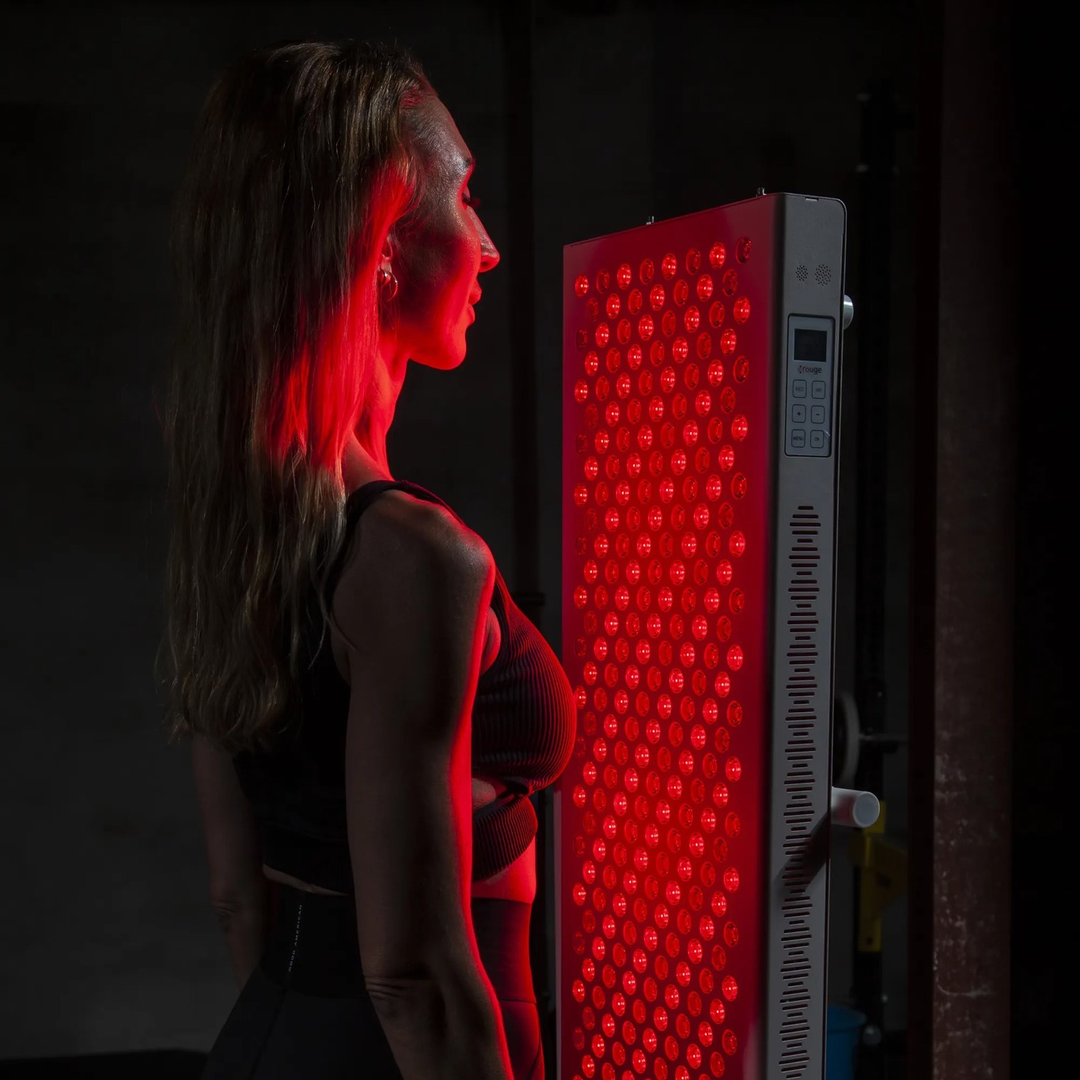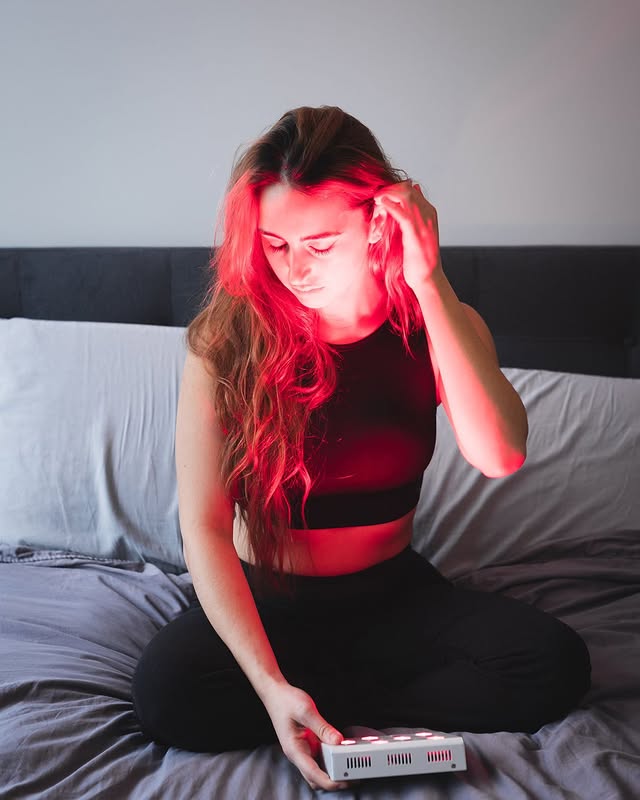![]() Free Shipping
Free Shipping ![]() Buy Now, Pay Later
Buy Now, Pay Later ![]() Eligible
Eligible
How Red Light Therapy Works for Seborrheic Dermatitis: A Comprehensive Guide

Seborrheic dermatitis is a common, chronic skin condition that affects millions of people worldwide. Characterized by red, flaky, and sometimes itchy patches—often on the scalp, face, and chest—this condition can be both frustrating and embarrassing. While traditional treatments like medicated shampoos, topical steroids, and antifungal creams can provide relief, they often come with side effects or lose effectiveness over time.
Enter red light therapy (RLT), a non-invasive, drug-free treatment that has gained popularity for its ability to reduce inflammation, promote healing, and improve skin health. But how exactly does red light therapy work for seborrheic dermatitis? Can it really provide long-term relief?
In this in-depth guide, we’ll explore:
- The science behind red light therapy
- How it targets the root causes of seborrheic dermatitis
- Clinical evidence supporting its effectiveness
- How to use red light therapy for best results
- Potential side effects and precautions
By the end, you’ll have a clear understanding of whether red light therapy could be the solution you’ve been searching for.
Understanding Seborrheic Dermatitis: Causes and Symptoms
Before diving into red light therapy, it’s important to understand what seborrheic dermatitis is and what triggers it.
What Is Seborrheic Dermatitis?
Seborrheic dermatitis is a form of eczema that primarily affects areas rich in oil-producing (sebaceous) glands, such as the:
- Scalp (leading to dandruff)
- Face (eyebrows, sides of the nose, beard area)
- Ears
- Chest
Symptoms include:
- Red, inflamed skin
- Greasy or dry scales (flaking)
- Itching or burning sensation
- Temporary hair loss (in severe scalp cases)
What Causes It?
The exact cause remains unclear, but several factors contribute:
- Malassezia Yeast Overgrowth – A naturally occurring fungus on the skin that can trigger an inflammatory response.
- Excess Sebum Production – Overactive oil glands create an environment where Malassezia thrives.
- Immune System Dysregulation – Some people’s immune systems overreact to Malassezia, causing inflammation.
- Hormonal and Environmental Triggers – Stress, cold weather, and hormonal changes can worsen symptoms.
Traditional treatments focus on antifungals (ketoconazole), steroids (hydrocortisone), and keratolytic agents (salicylic acid). However, these can thin the skin, cause dependency, or stop working over time.
This is where red light therapy offers a promising alternative.
What Is Red Light Therapy?
Red light therapy (RLT), also known as low-level laser therapy (LLLT) or photobiomodulation (PBM), uses specific wavelengths of red and near-infrared (NIR) light to penetrate the skin and stimulate cellular repair.
How Does It Work?
- Wavelengths (630nm–850nm): These penetrate 5–10 mm into the skin, reaching cells and mitochondria.
- Boosts ATP Production: Light energy enhances mitochondrial function, increasing adenosine triphosphate (ATP)—the cell’s energy currency.
- Reduces Inflammation: Modulates cytokines (inflammatory markers) and promotes healing.
- Increases Blood Flow: Enhances circulation, delivering oxygen and nutrients to damaged skin.
Unlike UV light (which damages skin), RLT is safe, painless, and non-thermal.
VELLGUS Elite V2
THE #1 RATED RED LIGHT DEVICE
VELLGUS pro V2
THE #1 RATED FULL BODY RED LIGHT DEVICE
How Red Light Therapy Helps Seborrheic Dermatitis
1. Reduces Inflammation
Seborrheic dermatitis is driven by an overactive immune response to Malassezia yeast. RLT helps by:
- Lowering pro-inflammatory cytokines (IL-6, TNF-α)
- Increasing anti-inflammatory cytokines (IL-10)
- Calming irritated skin without steroids
A 2014 study in Photomedicine and Laser Surgery found that red light significantly reduced inflammation in skin disorders.
2. Fights Fungal Overgrowth
While RLT doesn’t kill fungus directly, it strengthens the skin barrier, making it harder for Malassezia to thrive. Studies suggest that improved cellular function helps the skin resist microbial overgrowth.
3. Regulates Sebum Production
Excess oil feeds Malassezia. RLT may help normalize sebum production by balancing skin cell activity.
4. Accelerates Skin Healing
RLT promotes collagen production and cell turnover, helping repair flaky, damaged skin.
5. Soothes Itching and Redness
By improving circulation and reducing nerve irritation, RLT can alleviate itching and discomfort.
Clinical Evidence Supporting Red Light Therapy for Seborrheic Dermatitis
While more studies are needed, existing research is promising:
- A 2009 study in the Journal of Cosmetic and Laser Therapy found that RLT improved eczema and dermatitis symptoms.
- A 2018 review in Dermatology and Therapy highlighted RLT’s anti-inflammatory effects in skin diseases.
- Many dermatologists now recommend RLT as an adjunct therapy for stubborn cases.
How to Use Red Light Therapy for Seborrheic Dermatitis
1. Choose the Right Device
- Handheld RLT devices (for face/scalp)
- Panels or full-body beds (for larger areas)
- LED masks (for facial seborrheic dermatitis)
Recommended Wavelengths:
- 630–660nm (Red Light) – Best for surface inflammation.
- 810–850nm (Near-Infrared) – Deeper penetration for scalp issues.
2. Treatment Protocol
- Frequency: 3–5 sessions per week (start slow).
- Duration: 5–20 minutes per session.
- Distance: 6–12 inches from skin.
3. Combine with Other Treatments
For best results, pair RLT with:
- Gentle skincare (hypoallergenic cleansers)
- Antifungal shampoos (if needed)
- Moisturizers (ceramide-based)
Potential Side Effects and Precautions
RLT is safe for most people, but consider:
- Mild redness or dryness (usually temporary).
- Avoid if photosensitive (certain medications increase light sensitivity).
- Eye protection (especially with high-intensity devices).
Conclusion: Is Red Light Therapy Worth Trying?
Red light therapy offers a drug-free, non-invasive, and scientifically backed approach to managing seborrheic dermatitis. While it may not work overnight, consistent use can:
✔ Reduce inflammation
✔ Improve skin barrier function
✔ Soothe itching and flaking
✔ Enhance overall skin health
If you’re tired of the steroid cycle or looking for a natural adjunct therapy, RLT could be a game-changer.
Have you tried red light therapy for seborrheic dermatitis? Share your experience in the comments!
FAQs
1. How long before I see results?
Some notice improvements in 2–4 weeks, but full benefits may take 2–3 months.
2. Can I overuse red light therapy?
Stick to recommended doses—excessive use may cause temporary dryness.
3. Is RLT safe for the scalp?
Yes! Use a red light comb or panel for scalp treatment.
4. Can I use RLT with other treatments?
Yes, it complements antifungals and moisturizers well.
5. Where can I get red light therapy?
- Dermatology clinics
- At-home devices (recommended for consistency)
Final Thoughts
Red light therapy is a promising, science-backed treatment for seborrheic dermatitis. While not a cure, it offers a safe, sustainable way to manage symptoms without harsh side effects.
Ready to give it a try? Start with a high-quality device and track your progress—your skin might thank you!
References:
- Hamblin, M. R. (2017). Mechanisms and applications of the anti-inflammatory effects of photobiomodulation.
- Avci, P., et al. (2013). Low-level laser therapy for skin disorders.
- Clinical studies from Journal of Cosmetic and Laser Therapy and Dermatology and Therapy.








